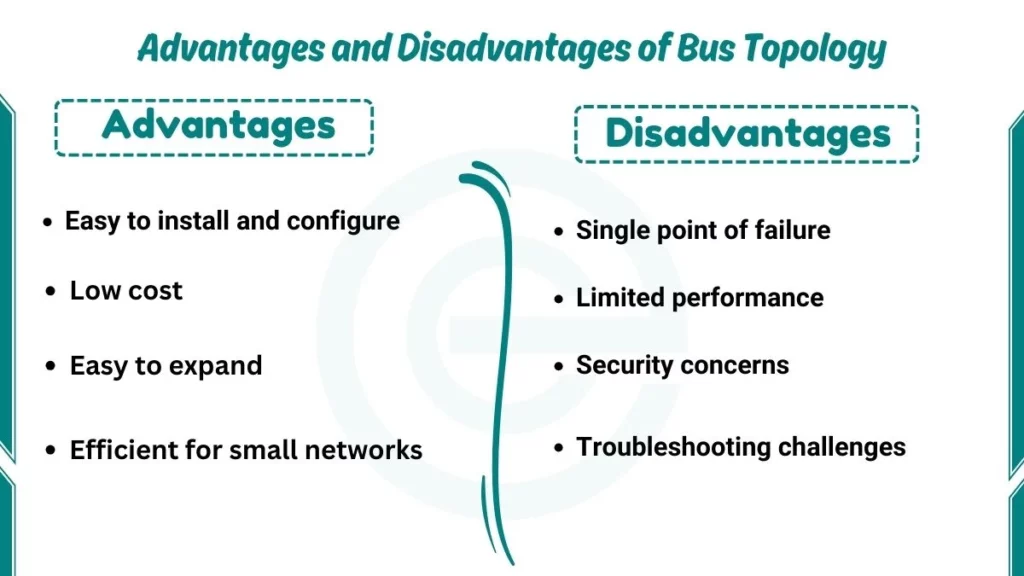The advantages of bus topology are Simplicity and ease of use, Reduced cable usage, and Less cost. Its disadvantages are security concerns and a Single point of failure.
In a previous article, we studied the concept of bus topology, where devices are connected sequentially using a single cable or backbone. This article aims to delve more in-depth into the advantages and disadvantages of implementing a bus topology in a network.
Advantages of Bus Topology
Here are bus topology benefits:

1. Simplicity and ease of use
One of the primary advantages of bus topology is its simplicity. The linear structure makes it easy to install and configure. Especially in small networks where straightforward setups are preferred. With devices connected to a single cable. The complexity of network management is reduced, making it an attractive option for those seeking a hassle-free network solution.
2. Cost-effectiveness
Bus topology is usually considered a cost-effective option mainly for budget-conscious network setups. The central cable and devices required for this topology tend to be less expensive compared to other topologies such as star or mesh. This cost-saving factor can be especially appealing for small businesses or organizations with limited resources.
3. Scalability
While not as scalable as some other topologies. Bus topology still offers a degree of flexibility. New devices can be easily added to the network by connecting them to the main cable. Although limited, this expansion capability can benefit organizations with expected growth in their network requirements.
4. Reduced cable usage
Compared to topologies like Star, where each device requires a dedicated cable to a central hub, bus topology requires less cabling overall. This reduced cable usage can translate into cost savings and more efficient use of space especially in environments where cable management is a concern.
Disadvantages of Bus Topology
Here are some drawbacks of bus topology:
1. Single Point of Failure
One of the most significant disadvantages of bus topology is its vulnerability to a single point of failure. If the central cable becomes damaged or disconnected the entire network can be brought down, as all devices rely on this single communication path. This critical vulnerability can lead to significant downtime and potential data loss. They are making it challenging to separate and troubleshoot the issue efficiently.
2. Limited Scalability
While bus topology offers some scalability, its performance degrades as the number of devices on the network increases. This is because all devices share a single cable, leading to increased traffic and potential bottlenecks. Further, there are limitations on the maximum cable length and the overall size of the network that can be effectively supported. It also restricts its scalability.
3. Security Concerns
All devices receive all transmissions on the network as the data travels through the shared cable. This characteristic raises security concerns, as sensitive information might be accessible to unauthorized devices connected to the network. Implementing more security measures on individual devices can be challenging, potentially compromising the network’s overall security.


